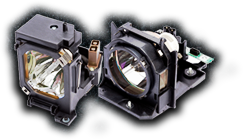As projector technology advances, the prices for Full HD set-ups continue their march downward. Here’s more evidence of the trend: Epson recently announced a trio of HD home theater projectors, and all are priced below $1,000.
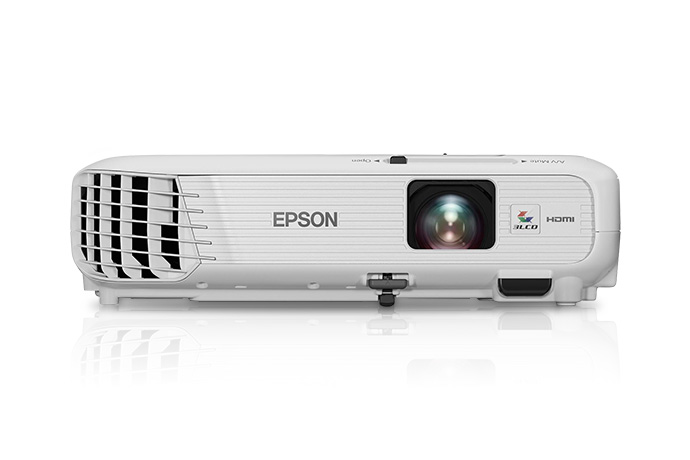
The projectors are all included in Epson’s line of best-selling Home Cinema projectors. The new releases include the Home Cinema 2040 (from $799), the Home Cinema 2045 (from $849) and the ultra wallet friendly Home Cinema 740HD (from $649). Each of the projectors boasts some powerful specs: They’re geared for home entertainment or pure cinema projection, have impressive contrast and brightness ratings, and they’re all 3D ready.
Home Cinema 2040 and 2045
The Home Cinema 2040 and 2045 will replace previous versions like the Epson Home Cinema 2030. Compared to the HC 2030, the 2040 and 2045 have vastly improved image specifications. They both deliver Full HD images with 2,200 lumens of color and white brightness (up from 2,000) and a contrast ratio of 35,000:1 (that’s up from 15,000:1).
For streaming content, Epson has developed the HC 2045 to handle whatever you throw at it. The 2045 is equipped with Micracast and Intel WiDi technology, which enable to projector to connect to and display content from Apple TV, Roku, and Chromecast – three popular OTT streaming set-ups.
Both are also available with 1080p resolution, they’re 3D ready and include rechargeable 3D glasses, and they are equipped with two HDMI inputs.
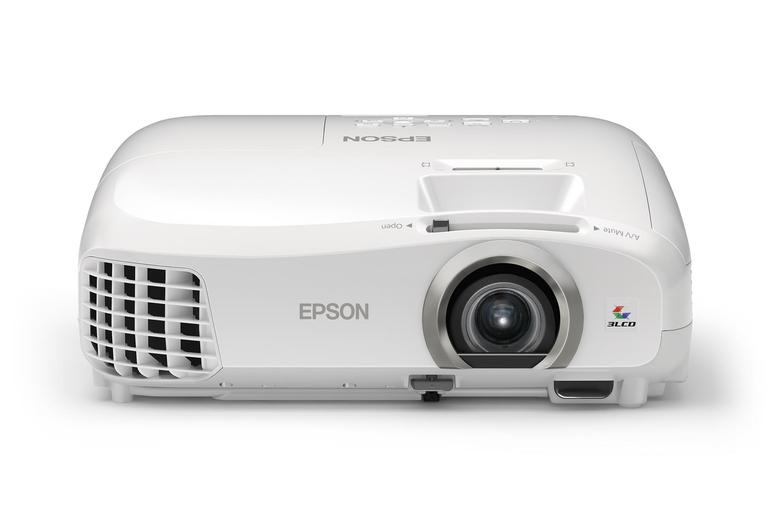
Home Cinema 740HD
The 740HD delivers slight improvements over the existing PowerLite Home Cinema 730HD projector, but Epson won’t be releasing many new features in the 740. For example, the contrast ratio has been pushed up a hair – the 740HD has a contrast ratio of 15,000:1 compared to the 730HD’s 12,000:1.
Unfortunately, the native resolution hasn’t yet been improved. Both the 730HD and 740HD cast images in 720p resolution, with capabilities to display Full HD content. One great thing is that the lamp life has been vastly improved in Epson’s ECO mode. The lamp is rated at 10,000 hours with the reduced power settings, up from 6,000 hours, and overall, in standard the rating is 5,000 hours. This greatly reduces the need for a replacement projector lamp – lowering overall maintenance costs.
MyProjectorLamps is your source for low-cost original projector lamps. We carry replacement bulbs and housing modules for the entire Epson line-up, including the outgoing Epson PowerLite Home Cinema 730HD’s replacement lamp and the Home Cinema 2030’s replacement lamp.
SIM2 Grand Cinema C3X1080 Projector Review
In 2007, at its initial release, the ultra-high-end SIM2 C3X1080 was a revolutionary home cinema projector. It was the most compact 3-chip DLP projector on the market. It delivered near perfect color performance. And it was one of the first Full HD 1920x1080p 3-chip home theater projectors available for consumers.
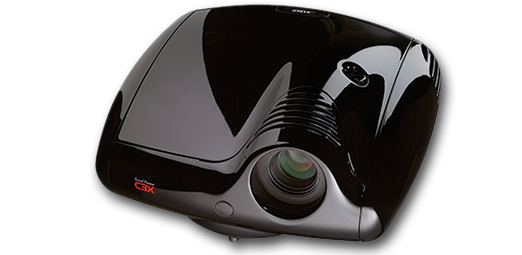
In other words, the C3X was, and is, a projector for the most devoted cinephiles. (Francis Ford Coppola, for example, counts himself a SIM2 customer.) The reason is the C3X was equipped with top-of-the-line technology: SIM2’s AlphaPath Light engine, a Full HD DarkChip4 DLP chipset, and 10-bit video processing. It was the Rolls Royce of 3-chip DLP projectors, and provided some of the most precise images of any projector. Of course, the C3X was price matched those premium specs. It started around $35,000 USD.
Although today the C3X is no longer in production, it remains a high-end machine, and it shares many similarities with SIM2’s current Grand Cinema LUMIS 20th Anniversary line-up. The C3X remains almost as much of a marvel today, as it did in 2007.
Looking at the State-of-the-Art Features of the C3X 1080 from SIM2
The C3X’s premium pricing reflected the innovative features and technology it was equipped with. The C3X was equipped with technology that – at the time, and even today – was on the cutting-edge. Here’s a look at some of the specs:
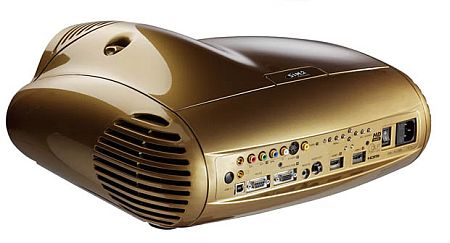
Brightness. The C3X’s 250-watt lamp delivered 2,500 lumens of brightness. It was brilliantly bright for home theater, and it had five distinct lamp modes to match the room’s ambient light. Plus, as a 3-chip projector the C3X eliminated the rainbow effect and motion noise that are more common with single-chip projectors.
Connections. The C3X was released nearly a decade ago, and as such, the projector’s connections are a little dated. But at the time, the range was on par with higher-end units. Connections included 2 HDMI 1.3 ports, USB 1.1, RS-232, composite video and PC connections, among others. The dual HDMI links were a rarity at the time.
Available Lenses. The C3X and many of its Grand Cinema successors have three available lenses, which provide short-throw and long-throw functionality. These include the T1 (short-throw), T2 (long-throw standard) and the T3 (long-throw). The range of options made it easier to fit the projector to match space requirements.
Image Processing. With 10-bit image processing, the C3X was capable of displaying up to 1 billion different colors. The color performance was impeccable, providing impressive shadow detail and deep, dark blacks. Plus, the projector was capable of delivering HiDef scaling, thanks to its PixelWorks DNX scaling engine.
Lamp. The C3X was equipped with a 250-watt lamp, which had an average life of about 1,500 hours. With the projector’s five available lamp modes, though, lamp life could be extended considerably. Today, replacement lamps for the SIM2 C3X 1080 are in high demand, as early adopters look to update aging lamp systems. At about $230, replacement lamps for the C3X 1080 (Part No. Z930100703) are a bargain, considering the initial investment.
Color Calibration. The C3X was equipped with TI’s 1080p DarkChip4 DLP chipset that provided a dizzying range of colors with absolute precision. To optimize the palate, the C3X was shipped with color management software that enabled operators and installers to precisely match the color to the theater environment.
Design. With a sleek, Italian-inspired design, the C3X has the look of a futuristic sports car. It’s an impressive high-end build. Plus, it weighed just 24 pounds, which was, and still remains, on the low-end for 3-chip projectors.
As you can see, the C3X1080 was a beast of a projector. It delivered ultra-precise images that were unmatchable in quality. Lately, the high-end 3-chip market has expanded with Barco and others dropping similarly priced machines. Yet, the C3X1080 set a precedent for what users demanded from $20,000+ projectors, and it’s a tradition that SIM2 carries on today in its Grand Cinema line-up.
Mitsubishi WD380U-EST Ultra Short-Throw Projector Review
There are dozens of portable, ultra-short throw projectors available these days. Yet, there was a time when finding an ultra-short throw projector that was also portable was near impossible. The Mitsubishi WD380U-EST was one of the first available with an ultra-short throw, that was packaged in a lightweight body. It quickly became a popular, modestly priced projector for business and classroom audiences.
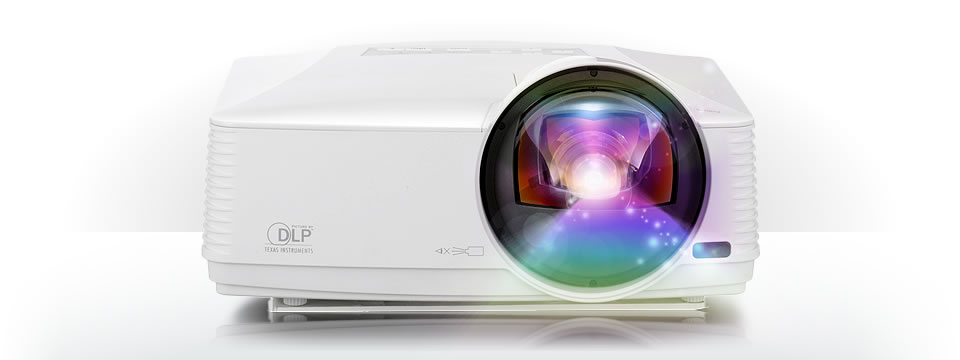
The interest in the projector made sense too. It had an ultra-short throw. The projector is capable of displaying a 100-inch image from just 30 inches away. Plus, the projector had a feature-set that was rare for budget-friendly projectors. The Mitsubishi WD380U-EST was equipped with robust wireless connectivity, an HDMI port, a USB-A port, a capable 10-watt speaker, and PC 3D compatibility. And at 9 pounds, it was a projector you could take anywhere.
Today, not only is the WD380U out of production, Mitsubishi itself exited the projector market in 2013. Even so, the WD380U – and also the WD390U, which was released two years later – remains a highly capable ultra-short throw projector. Image quality, portability, and throw-range are ideal for uses, and the feature sets compares to what you’ll find in similarly priced UST projectors today. Through third-party resellers, the WD380U can be hard to find, but the replacement WD390U, which shares a majority of features with the earlier model, is still available. If you need a portable, UST projector, the WD-380U or WD390U should garner your attention.
Mitsubishi WD380U-EST: Features and Specifications

Aside from portability and throw ratio, the WD380U was backed up with a load of premium features. It remains competitive with similar priced projectors that have been released more recently. Some of these features include:
- Brightness and Contrast: The WD380U’s lamp delivered up to 2,800 lumens of brightness with a 3,000:1 contrast ratio. Plus, the brightness was adaptable. In the Whiteboard mode, the projector adjusted output to match a makeshift screen like a whiteboard or blackboard. Even in these applications, brightness remained at about 1,500 lumens. Plus, in Presentation mode, which was designed to project black-and-white images, images were crisp, clear and easy to read. The WD390U received a slight boost in output: an even 3,000 lumens of brightness.
- Long Lamp Life: The WD-380 is equipped with a 230-watt lamp that has been optimized for maximum life. In standard operating mode, the lamp has a life of 3,000 hours – about average for similar DLP-based projectors – and it boosts up to 6,000 hours in economy mode. Fortunately, a replacement lamp for the Mitsubishi WD380U remains affordable. The replacement part (No. VLT-XD560LP) starts just north of $200.
- Easy Setup, User Friendly Controls: One reason the WD380U is so portable is that it remains super easy to install. Essentially, it’s a plug-and-play projector. That makes this projector useful as a cart installed projector. Plus, it requires little-to-no calibration before installation, and the controls are easy enough that anyone can use them.
- Built-In Audio: The 380U’s built-in 10-watt speaker provides decent output for classroom and business environments. Yet, even more useful is the projector’s audio mixing capabilities. The projector enables users to mix audio from two different sources. So for instance, a presenter could show a video, while using a wireless microphone to provide commentary. Even today, that remains a fairly unique option for budget- and mid-range projectors.
- A Range of Connections: The WD380U is equipped with a variety of ports, including an HDMI link, S-Video, two VGA connections, and both a USB-A and B port. The USB A connection makes it possible to display content directly from a USB drive. Plus, the projector has great wireless networking options, including the ability to pull content from a remotely-connected desktop computer.
So what’s the bottom line? Even though Mitsubishi no longer makes projectors, the WD380U remains an intriguing option for smaller spaces. Plus, the features are extremely useful. If you can find the WD380U as a refurbished or new option from a third-party reseller, this will provide a ton of functionality at a fairly economical price.
Sharp PG-LX2000 Data Projector Review
The Sharp PG-LX2000 was released in the U.S. in 2012, and at the time, it received high marks for performance, image quality and price. It was a budget-friendly, sub-$1,000 projector that cast brilliant data images. Plus, it was equipped with an HDMI connection – which wasn’t as common then as it is today – and it was lightweight and super portable.
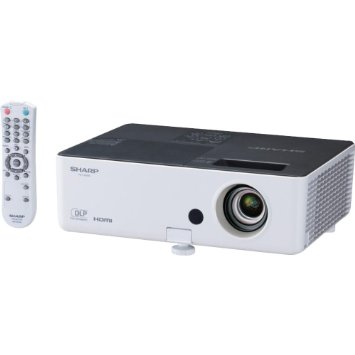
Currently, the PG-LX2000 is out-of-production, having been so for about a year, but yet, it remains an intriguing, no-frills set-up that’s still available used and new from resellers. As a piece of hardware for the conference room or classroom, the PG-LX2000 holds its own. Backed up by DLP-chip technology and a 2,800-lumen brightness rating, the projector delivers detailed and striking data images in the native XGA resolution, with passable video.
Bottom line: If you can find a new or lightly used PG-LX2000 at a great price, the projector is worth your consideration.
Key Features and Specs: Sharp PG-LX2000
- Data Image Quality: The PG-LX2000 does best as a data projector, and as such, the data images it creates are crisp, clear with nearly non-existent rainbow artifacts. In other words, if you need a projector for presentations, this one delivers great images. Plus, it’s 3D ready and does accommodate HD video, although the image quality from these sources suffers a bit.
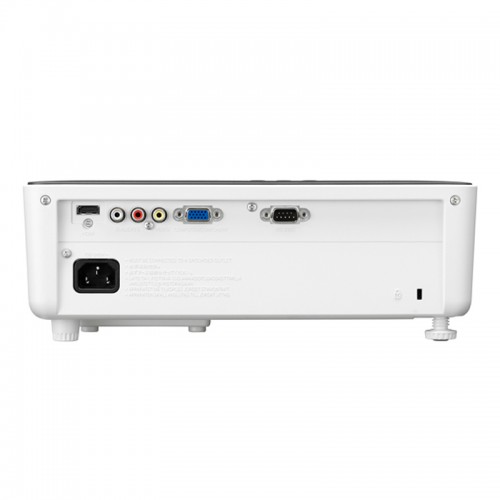
Sharp PG-LX2000 Rear Inputs - Useable Video: The Sharp PG-LX2000 displays video from a variety of sources, and the HDMI connection makes it possible to hook up a Bluray player. Yet, it is an XGA resolution (1024×768) projector, and as such, any HD video must be scaled to fit. In other words, this isn’t suitable for regular video use – a Full HD projector makes more sense – but video quality is OK for incorporating clips into presentations.
- Long Lamp Life: In standard operating mode, the PG-LX2000’s lamp achieves 3,000 hours or life, and it jumps up to 5,000 hours in economy mode. What’s more: The PG-LX2000’s replacement lamp and module – Part No. AN-LX20P – costs about $200, keeping maintenance costs low.
- Contrast Ratio, Brightness Rating: With a contrast ratio of 2,000:1 and 2,800 lumens of brightness, the PG-LX2000 is right in the middle of the pack for similarly priced projectors released in 2012. Yet, the image is bright enough to handle spaces with ambient light, like a boardroom or classroom, and the contrast provides great black-and-white clarity. Thus, for multimedia presentations and the occasional video, the projector is more than capable.
- Low-Quality Audio: The projector is equipped with a 2-watt built-in mono-speaker. Unfortunately, that leaves a lot to be desired. The audio works nicely in quiet environments like the board room. But in noisier spaces, like a classroom full of kids, the audio just doesn’t cut it. Plus, the projector doesn’t have an external audio jack, so external audio must be synched with an external audio player.
- Dated Design: The PG-LX2000 is boxy in shape. It’s a little clunky, and almost resembles an original Nintendo hardware system. Fortunately, the projector is lightweight at just 5 pounds, and is thus, extremely portable. That’s OK though, as the look of the projector isn’t often at the top of business’s and school’s list of priorities.
If you need a workhorse data projector for in-class or business presentations, the PG-LX2000 is a useful piece of hardware. What it lacks in advanced features, the projector makes up for in data image quality, lamp life and price. Compared to similarly priced projectors, the PG-LX2000 offers just a bit more in way of features – and even today, it’s worthy of consideration.
ProjectionDesign F80 WUXGA Projector Review
Since ProjectionDesign released the F80 WUXGA projector in 2009, quite a bit has changed. For starters, Barco acquired ProjectionDesign in 2013. Plus, the projector has since been replaced by the Barco F85. So not only is the company no more, so is the projector.
Even so, in 2009, ProjectionDesign’s WUXGA large-venue projector was an intriguing, and very expensive, piece of hardware. The projector was equipped with 3-chip DLP technology that delivered 8,500 lumens of brightness combined with an unprecedented contrast ratio of 15,000:1. It was a powerful, top-of-line projector widely used for simulations and industrial design, and one of the most state-of-the-art 3-chip projectors available.
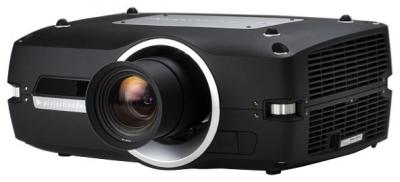
And it was costly. Today, even, a used, B-stock version costs nearly $20,000. But it was well worth the investment. The projector delivered unparalleled performance, exceptional image quality, and powerful optical calibration, thanks to ProjectionDesign’s Advanced Color Optical Processing. Looking back at the F80 is useful for providing insight into Barco’s current line-up of projectors.
Looking at the ProjectionDesign F80 specs and features
- 8500 ASNI lumens
- WUXGA (1920×1200) Native Resolution
- Advanced Color Optical Processing
- 15,000:1 Contrast Ratio
- 2xHDMI, DVI-D, VGA, S-Video Connections
Color Accuracy. This wasn’t just a large-venue projector with a high brightness output. The color accuracy it provided was off-the-charts. The ACOP technology combined a series of independent filters for each color channel, which delivered enhanced optical calibration. Plus, brightness and color output could be tailored to the application, whether for HD video or live performances.
Precise Optional Lens Selection. The F80 WUXGA was available with a range of optical lens, providing installation flexibility and impressive performance. The lens selection included a full range of options from an ultra-wide-angle to telescopic zoom, and each lens allowed users to adjust aperture, iris, focus and zoom for the specific application.
Low-Maintenance, Long-Lasting Performance. The F80 was constructed to require little maintenance while in use. For instance, it was equipped with a dual 330-watt lamp system, part number 400-0700-00, to increase brightness and lamp life. The F80’s lamp module achieved 1,700 hours of life in standard mode, 2,000 hours in eco mode and 4,000 hours in the relay mode, alternating between the two lamps. Plus, the filters didn’t require regular replacements and there were no serviceable parts.
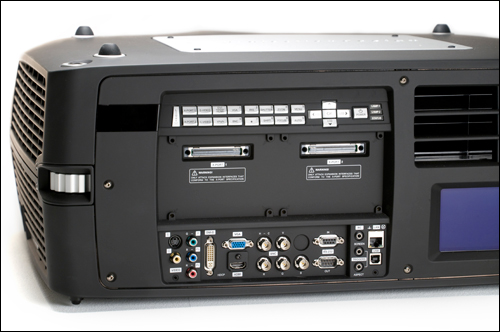
Looking at the ProjectionDesign F80 Today
At the time, the ProjectionDesign F80 WUXGA was one of the best, but even today, its performance is still excellent. The F80 is still widely used in industry, including the full HD version in large venues that require video, and the WUXGA version for simulation and research applications. Considering its power, it’s easy to understand why there’s still a used and rental market for this projector.
Looking for a ProjectionDesign F80 WUXGA replacement lamp? MyProjectorLamps is your source. We deliver OEM replacement lamps throughout North America, at the best prices, on-time and with an unbeatable customer experience. Start shopping for replacement projector lamps today.
Dell 1610HD WXGA Projector Projector Review
Although it was launched five years ago, the 1610HD remains a staple in Dell’s line-up of projectors. There is a lot to love about the 1610HD. It delivers substantial brightness, 3,500 lumens; it’s light and portable; image quality and color performance is accurate and without minimal distortion. And it’s priced just right: The projector starts at $749 from Dell.
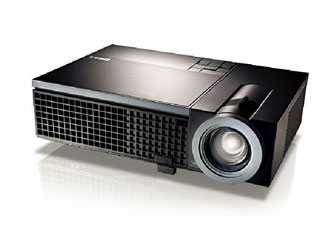
One thing to consider: the Dell 1610HD is a WXGA resolution (1280×800) projector. That’s an improvement from many data projectors in the XGA resolution, but it leaves something to be desired when projecting Full HD (1920×1080) content like video and images. In other words, as a data projector the Dell 1610HD is an incredible data projection tool – for classrooms, churches, and businesses. But it’s not the best replacement for the home theater: The lower resolution just doesn’t hold up when running movies, video games or 3-D content.
So if you need a presentation tool – with occasional video – this projector will help you accomplish that. But if you use video frequently, you’d be better served upgrading to a Full HD projector.
A Quick Look at the 1610HD’s Specs and Features
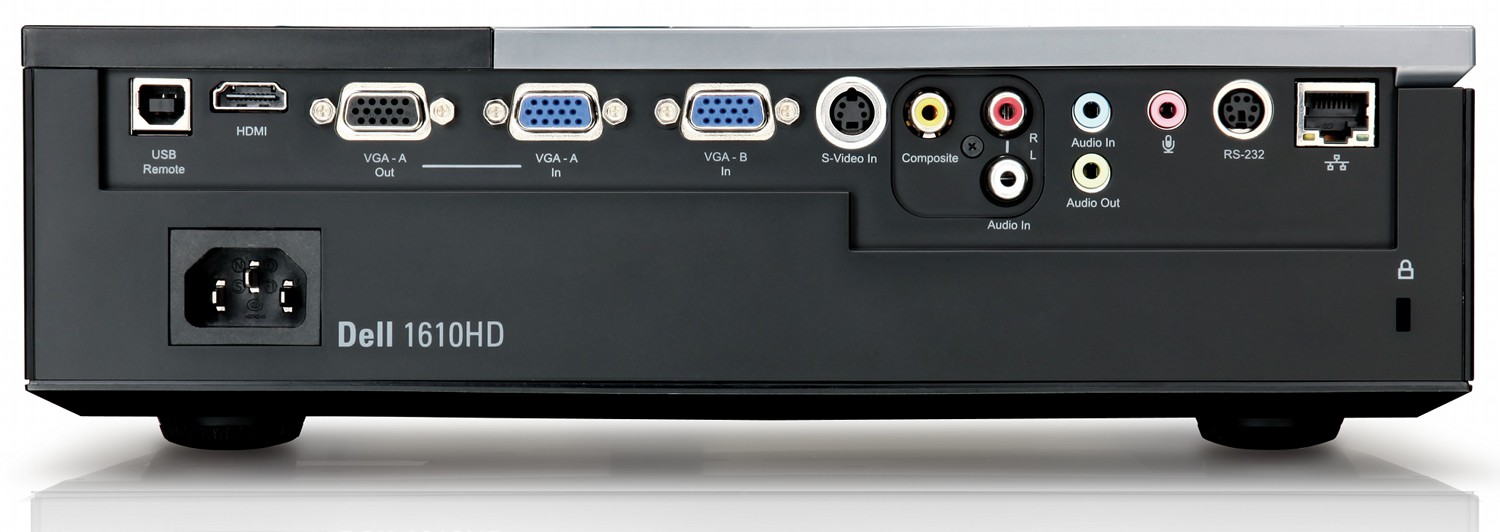
The 1610HD is a clear step up from the 1510HD, Dell’s previous XGA projector that’s now out-of-production. The 1610HD has a higher resolution for starters WXGA vs XGA. But the 1610HD also features:
- Great Image Quality, Color Performance: Backed up by the 3,500-lumen output and a 2,100:1 contrast ratio, the DLP-based 1610 creates crisp and vibrant images. Plus, the projector is equipped with BrilliantColor technology to enhance the colors. In some cases, the output can be somewhat muted, but for presentations, black-on-white text has great clarity with mild rainbow artifacts present. Performance, in other words, is above average when it comes to data images.
- Long Lamp Life: Compared to similarly priced DLP projectors, the Dell 1610HD gets long life from its lamp. In standard operating mode, the lamp is rated at 3,000 hours of life, and in economy mode, the projector can run for up to 4,000 hours. If buying used, the Dell 1610HD replacement lamp and module, also known as 330-6581, is affordable – at just north of $205 for the lamp and module.
- Useful Portability: In terms of size and weight, the 1610 is super portable. It measures 3.5×11.7×8 inches and weighs about 5 pounds. This projector can go wherever you want to take it, and it comes with a standard carrying case. Unfortunately, the zoom ratio is below average, at 1.2:1, and there is no lens shift. So you operators are a little limited in terms of fitting the image to the screen.
- A Variety of Connections: For a projector released in 2010, the 1610 has all the connections you can expect from similarly priced projectors – even those released today. The 1610 has an HDMI port, 2 VGA input ports, S-Video, 3 RCA connections, and a USB-B port, which makes it possible to hook up a wireless remote. The one useful connection its missing is the USB-A, which enables operators to plug-and-play content from a USB drive.
- Competent Audio Output: The 1610HD is equipped with an 8-watt speaker that provides enough volume to fill small- to medium-sized spaces. Yet, in the noisiest locations, operators may opt for external audio, as at higher volumes, some have noted there’s noticeable distortion.
- Average Video, 3D Performance: The biggest pitfall of the Dell 1610HD is its video and 3D performance. Video can slightly lag, and although it’s capable of displaying Full HD content, it has to be scaled. 3D performance, on the other hand, is a bit below average for a $749 projector. If you rely on video or 3D content, you might opt for a Full HD projector.
Bottom Line: the Dell 1610HD Is a Useful Presentation Projector
For the price, the 1610HD provides what presenters are looking for: contrast and brightness, a range of connections, and lightweight portability. The Dell 1610HD holds its own these days, compared to projectors released in the last 6 months. Unfortunately, the video performance seems a little dated. But if you use video only occasionally, you won’t likely notice. If you’re looking for a budget projector for the classroom or a conference space, you can get a lot of useful hours out of the 1610HD.
SMART 600i6 Interactive White Board System Projector Review
The SMART 600i6 is the merging of two technologies: A SMART 600 series interactive white board and the SMART UF70 or UF70W projector. This projector and white board are widely used in education institutions, particularly K-12 classrooms, and SMART is a favorite manufacturer of white board systems around the world.
The reason is that SMART has developed a system that is interactive, easy-to-use, and that delivers great multimedia performance. The 600i6 board/projector set-up is an upgrade compared to previous 600 series iterations. For starters, the UF70 is an ultra-short-throw projector, with a throw range of just 25 inches. That throw is half as short as the UF65 – meaning it can be placed much closer to the screen, while achieving similar results. That option makes this ideal in the classroom, because it can greatly eliminate the cast of images. It also means that you can use a lower wattage bulb, since you are closer to the screen and require less brightness to achieve a brilliant image. The lower wattage bulbs also burn less hot, and thus last longer.
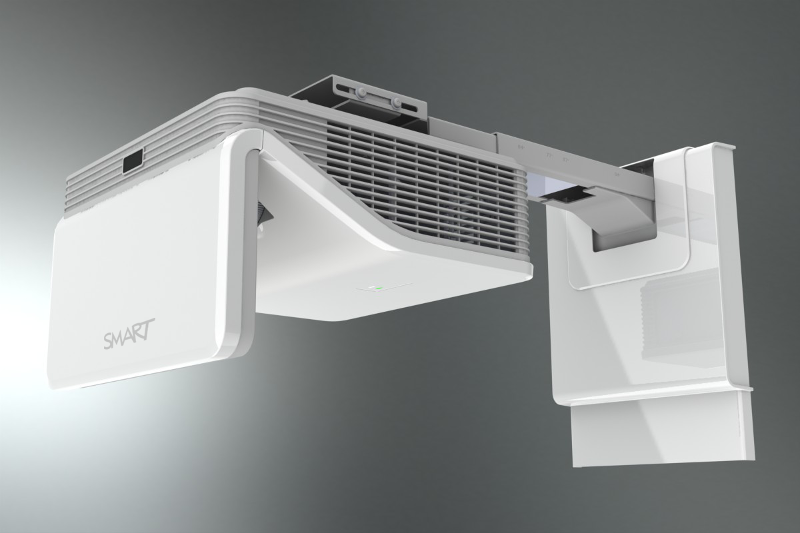
Plus, the UF70 projector has a range of compatibilities. It can be used with 600, 800 and M600 series SMART interactive white boards, and it can be adjusted using the projector’s shifting capabilities. Thus, it’s a useful option for school districts, because it can be merged or retrofitted into existing systems. In all, the UF70 in the SMART 600i6 system is a powerful projector and the perfect presentation tool in classrooms.
A Quick Look at the SMART UF70 Projector
The biggest difference between the SMART UF70 and previous SMART projectors is the throw range. The current SMART lineup, which includes the UF70 and UF80, are ultra-short-throw projectors. This means that the distance the projector needs to be placed from the screen is half the distance – just 2 feet from the screen – compared to earlier SMART projectors. This greatly reduces shadowing caused by a teacher standing in front of the light source.
But there are many other reasons to like the UF70 projector. Other UF70 highlights include:
- 3,000 Lumens
- 2,900:1 Contrast Ratio
- Full HD Video Playback
- HDMI, USB Inputs
- Lamp Life Up to 4,000 Hours
Using the SMART 600i6 Board and Projector in the Classroom
SMART interactive systems are different than traditional classroom projectors. For one, they’re bought and sold as a system, with the board, projector and accessories included in the package. That’s why it’s difficult to review just the projector.
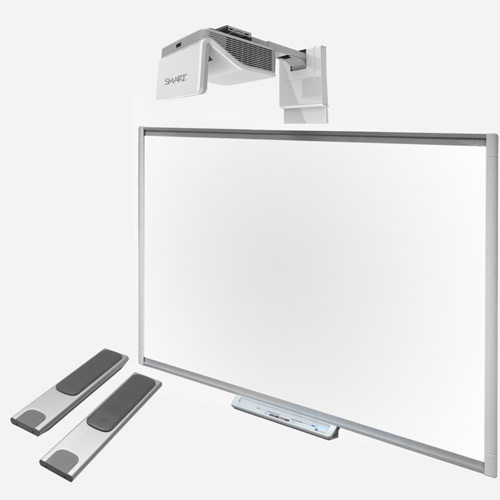
But also, they aren’t used just to project images. SMART projectors are used to create interactive images. That means, when you project an image from your computer, for example, you can control your computer directly from the SMART screen with a pointer or by touching the screen. They’re widely used for:
- Annotating Presentations
- Click-to-See Information
- Interactive Testing
- Writing Equations and Notes on Screen
- Highlighting Important Text
In that case, the UF70 does its job well. It delivers crisp, clear images from the computer onto the screen. Pictures – thanks to color perfecting technology – are vibrant and rich with detail, and the projector’s video performance is useful. Although this projector won’t replace a Full HD video set-up, the video features work nicely for short in-class clips, or for showing the occasional classroom movie. Plus, the interactivity is extremely engaging for students. If you’re considering an upgrade, the UF70 and 600i6 offer many benefits over the previous UF65 projector – including a brighter image (2,000-lumens vs. 3,000 lumens), better contrast (2,000:1 vs 2,900:1) and a shorter throw range (the UF70 is half as short).
MyProjectorLamps is your source for a SMART 600i6 replacement bulb. We carry original replacement lamps for the 600i6 – replacement part No. 1020991 – which includes the SMART lamp and housing module. Start shopping for a projector replacement lamp today.
Panasonic PT-EX16K Auditorium Projector Review
For an XGA resolution projector, the best-in-class Panasonic PT-EX16K boasts some powerful specs. Its quad-lamp design achieves 16,000 lumens of brightness – more than enough to provide bold, brilliant images in the largest venues. It’s capable of projecting an image up to 600 inches diagonally, and with Panasonic’s Pure Color Technology, the color saturation in these massive images is near-perfect. Plus, durable construction, flexible installation and long lamp life are other reasons this is a premium projector. So why isn’t this the world’s most popular XGA projector?
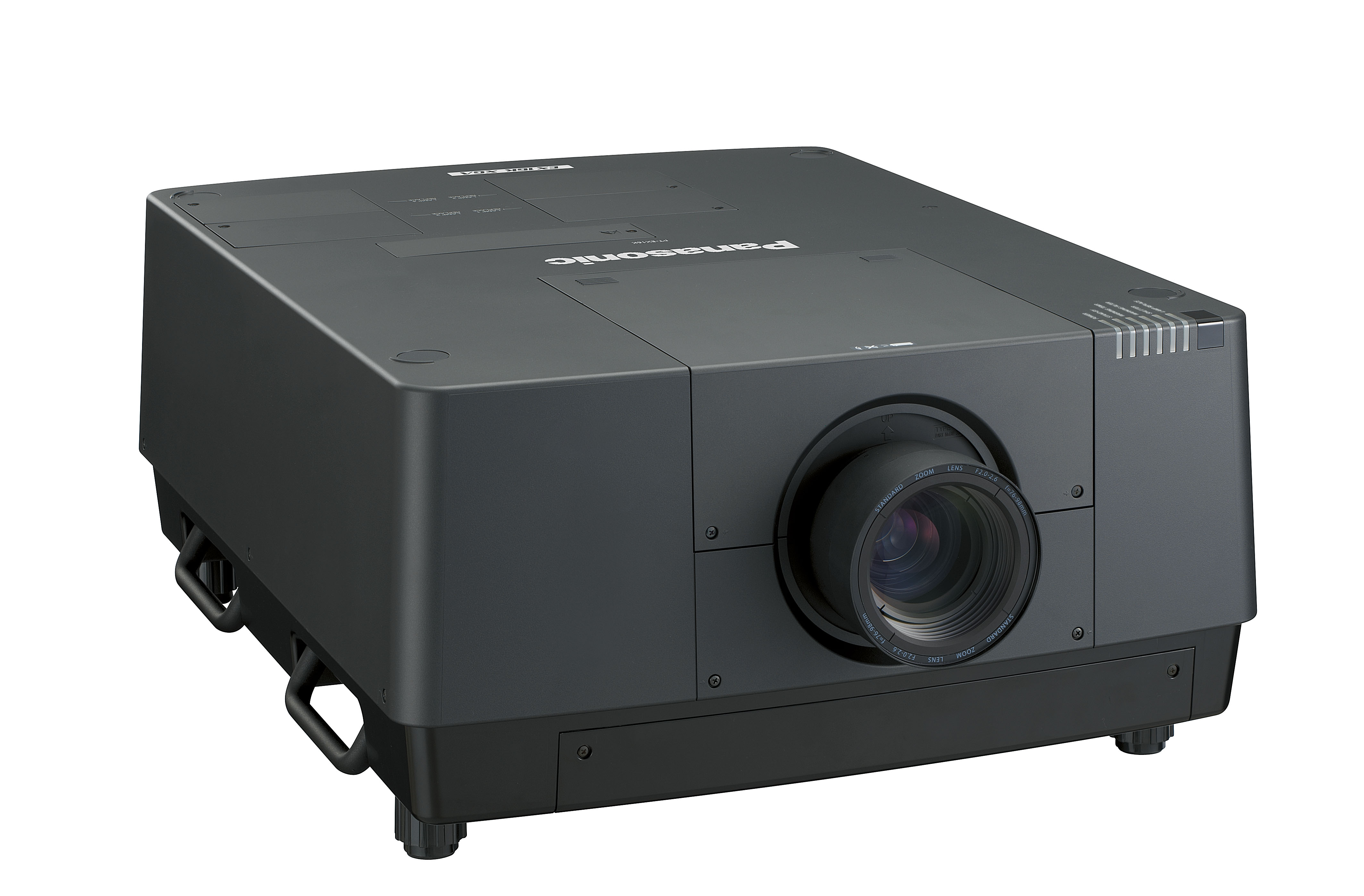
For starters, this Panasonic comes with a premium price tag. When it was launched in 2011, the PT-EX16K started at $28,999 MSRP. Since then, the price has dropped, with the average street price at about $10,000. That means this is a projector for larger organizations – corporate businesses, 1,000+ member churches, and museums – that have a budget for technology. Plus, at just over 100 pounds, this is a permanent installation projector. For these large venues and for organizations with the money to spend, the Panasonic PT-EX16K is powerful, provides impressive image quality, and with a range of lenses and lens shift, the installation possibilities are endless.
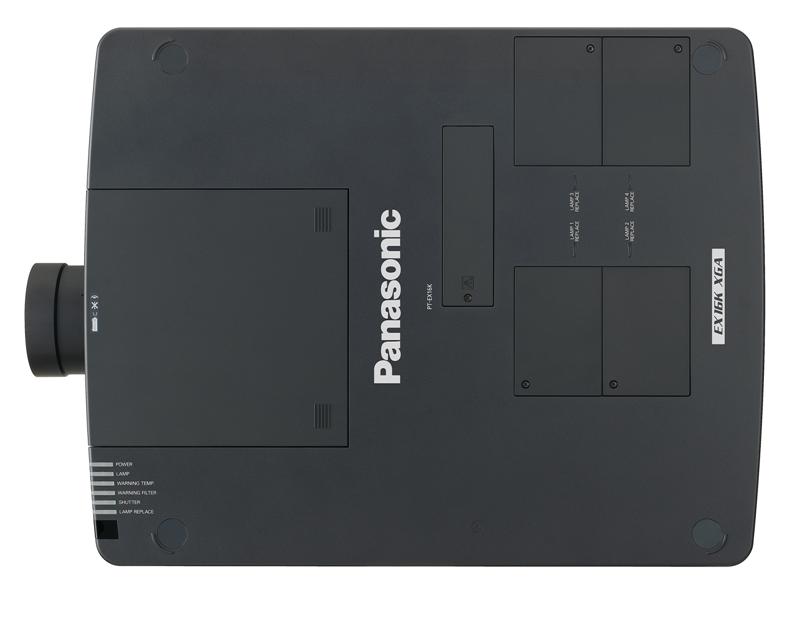
Panasonic PT-EX16K: Specs, Features and Pricing
- 16,000-Lumen Brightness: The Panasonic EX16 achieves such a bright image thanks to its quad-lamp design. The projector uses four 380-watt bulbs, thus it’s about four times as bright as standard single-lamp XGA projectors. That’s one reason it’s widely used in large venues: The image is bright enough to compete with ambient light, delivering an image that’s crisp, clear and vibrant.
- Color Performance, Image Quality: The 3-chip LCD EX16 is designed to provide impressive and detailed color. There’s a chip that maintains light intensity for each primary color, but in addition, the Pure Color Technology enhances and controls the yellows, adding another layer of color reproduction. Plus, the 16-bit processing delivers smooth skin tone coloring, and the 2,500:1 contrast ratio provides detail in dark areas of the image. In effect, the images jump off the screen with bold, accurate coloring. |
- Installation Flexibility: Even though the PT-EX16 is built for large venues, there’s a range of options for installation. For starters, vertical and horizontal lens shift make it possible to fit the projector to an existing ceiling mount. Plus, Panasonic offers a wide range of lens – from short or long zoom lenses, to fixed short, long and ultra-long options. So, even though portability is limited due to the sheer size of the projector, there are plenty of options for installation: from overhead to ceiling-mounted, to rear-projection.
- Rugged Construction: The PT-EX16K is built to last. From the durable outer shell, to long-lasting air filters and optical engines, there components of this projector are of the highest quality. Both the filter and the optical lens are rated at 10,000 hours of use, and the optical engine is designed to regulate and maintain the LCD panels over time to prevent degradation. Additionally, there’s an iron base plate to protect the bottom of the projector.
- Screen Size: The Panasonic is designed to project an image between 40 and 600 inches diagonally, and yet, the technology helps it achieve constant color saturation and image quality. What’s more: There’s a multi-screen support system, enabling the projector to connect across more than one screen. The support includes edge blend – to blend the edges of different screens – as well as color match.
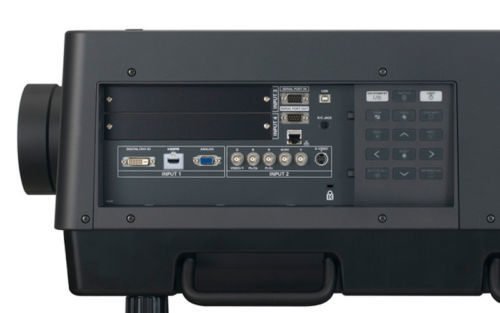
Panasonic PT-EX16AK Projector Inputs
The Panasonic PT-EX16K: A Powerful, Quality Large-Venue Projector
Panasonic has a reputation for developing high-quality projectors, and the PT-EX16K certainly carries on the tradition. The EX16K is a special piece of hardware. It’s one of the brightest XGA resolution projectors available, and it delivers powerful, impressive images. Plus, with the ability to cast a 600-inch screen, the projector is ideal for auditoriums, larger venues.
The Panasonic is widely used as a corporate presentation tools, as well as in museums for delivering multimedia. If it’s in the budget, this is a particularly useful piece of hardware. The projector is extremely useful for data projection – it can display 1080p video, but it doesn’t specialize in video – and if you’re on the market for an auditorium projector, the EX16K should be on your short list.
MyProjectorLamps is your source for a Panasonic PT-EX16K replacement lamp. We carry only quality, original parts, and for the PT-EX16K we offer the lamp and housing module. If you’re on the market for this replacement part (part No. ET-LAE16), give us a call or browse our inventory today.
NEC NP-PE401H Full HD Data Projector Review
Launched in 2013 as the first in NEC PE series, the NP-PE401H is billed as an “entry-level” data projector. That means it’s fairly affordable, starting at $1,999, while delivering high-impact performance. For presenters, the PE401H is a solid projection tool. The projector provides a 4,000-lumen, Full HD image, in the 16:9 aspect ratio (compared to the typical 16:10 for data projectors). That alone is one reason the projector stands out, but there’s also a wide range of functionalities and features.
For instance, the NP-PE401H delivers up to 3,300 hours of lamp life – which is above average for Full HD projectors, and will save you on a replacement lamp – plus, it can accommodate data from almost any source. There are two HDMI ports, an S-Video port and composite video port, as well as a USB-B port. Schools, churches and mid-sized conference spaces looking for a projector – particularly those that rely on video – should consider this projector.
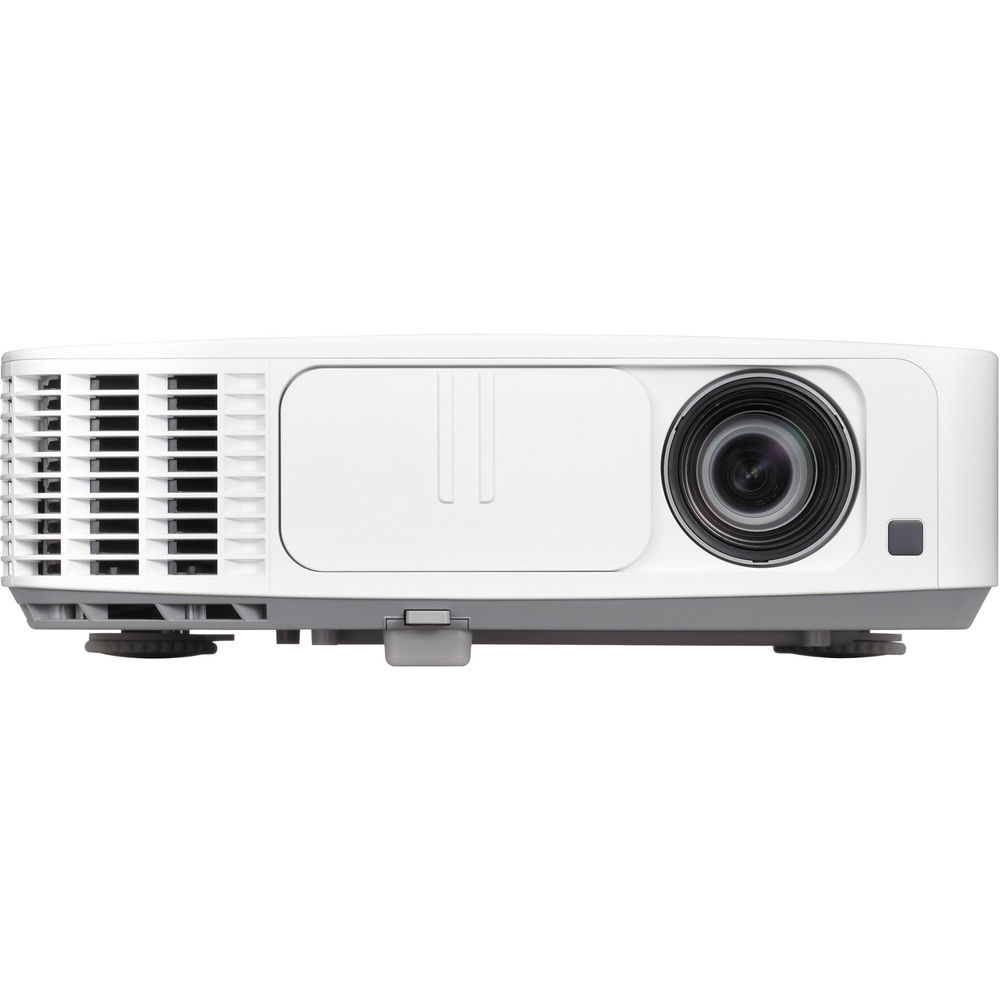
Features and Specs: NEC NP-PE401H
With its bright output, the NP-PE401H performs well in rooms with some ambient light. That makes it ideal venues like schools and boardrooms where it’s difficult to achieve dark lighting conditions. Of course, it won’t compete with direct sunlight, but also, you won’t need to draw the shades completely. In addition to brightness, though, there are a lot of great features available. These include:
- Great Image Quality: The NP-PE401H is all about image quality. Backed up by BrilliantColor technology, the color saturation is lush and vibrant. Plus, the image is crisp and detailed, with a 2,000:1 contrast ratio. The clarity of black-on-white text is near-perfection, and the technology delivers great detail in pictures, which is ideal for medical diagrams, architectural drawings or other images with fine detail.
- Full HD Video, 3D: Although it’s not built as a video projection tool, the NP-PE401H is very capable. It delivers Full HD 1080p video, so you can plug-and-play a Bluray player via an HDMI cable. Plus, it’s capable of providing basic 3D content. In other words, this isn’t a replacement for your home theater projector, but if you’ll be using video clips and short videos in your presentations, the NP-PE401H delivers. Unfortunately, 3D glasses are not included.
- Large Image Projection: The NP-PE401H is designed to project images up to 300 inches diagonal, which is more than sufficient for most classrooms. Even when projecting an image that large, quality keeps pace, with only slight issues visible. With a picture of about 150 inches, though, the image quality is stunning.
- Long Lamp Life: Full HD LCD projectors, in general, have long lasting light sources. That’s certainly true in the NP-PE401H. The projector’s 330-watt bulb achieves 2,500 hours of life in the standard mode – just above average for similar projectors – and it’s capable of up to 3,300 hours. Fortunately, the NEC NP-PE401H replacement lamp – part No. NP24LP – is a low-cost investment, helping to save on maintenance costs over the life of the projector.
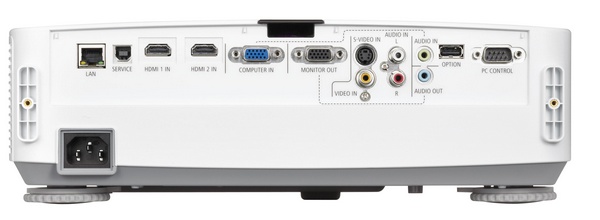
NEC NP-PE401H Rear Inputs - Sufficient Sound Quality: The projector is equipped with a dual 8-watt speaker system, and that’s extremely useful for multimedia presentations. The speakers deliver decent audio, enabling presenters to plug-and-play without having to connect to an external audio source.
- Installation Flexibility, Portability: The projector weighs about 10 pounds, which isn’t exactly ideal for ceiling mounting, but it still remains portable. NEC labels this a tabletop-front or table-top back projector, meaning it performs well when sitting on the table of a boardroom or a classroom desk. Yet, it also performs well on a cart. Without lens shift, though, installations do need to be precise to achieve maximum results.
Bottom line: If you’re looking for a projector for a small or mid-sized venue, the NEC NP-PE401H is a reliable and powerful tool. The image quality is stunning, the features are on point with similarly priced projectors, and NEC has a reputation for building high-quality A/V tools. Plus, the price, although a bit higher than some budget projectors, is in reach for most organizations.
Hitachi CP-X8170 Projector Review
The CP-X8170 is Hitachi’s top-of-line, large-venue projector, and as such, it carries quite the price tag. The CP-X8170 is available starting at around $8,000. Even so, the CP-X8170 provides plenty of benefits. The image is vibrant and bright, rated at 7,000 lumens. Its vertical projection capabilities and range of optional lenses provide installation versatility. And the advanced networking and security features are useful for education institutions, churches and conference venues.
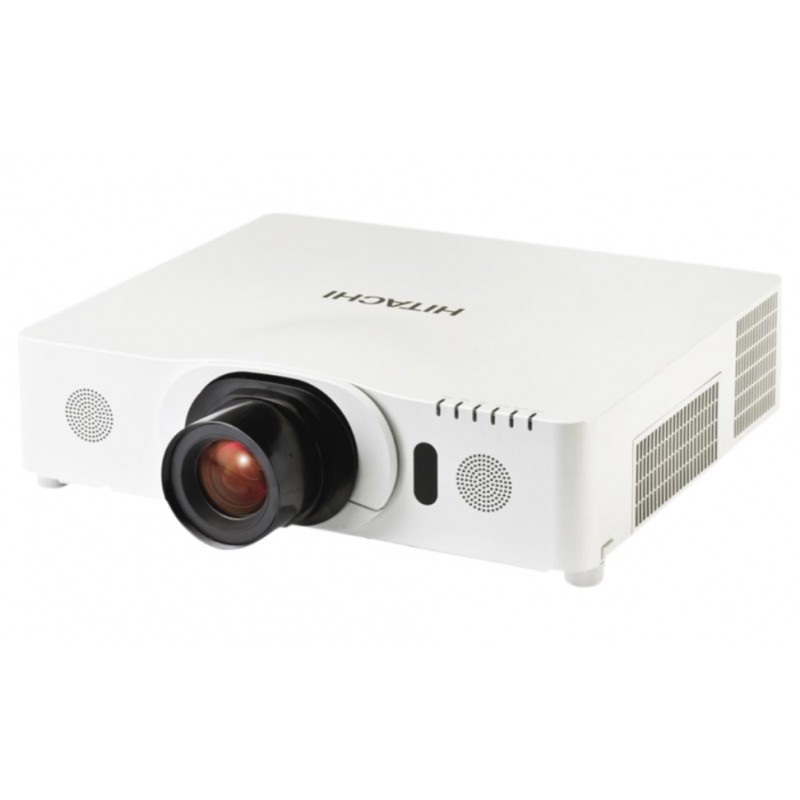
In the large-venue category, the CP-X8170 is a formidable competitor. The projector can be stacked, to enhance brightness or create immersive environments, and the images are crisp and clear. The biggest disadvantage, of course, is price. It’s firmly at the higher-end of price range for large-venue projectors. But yet, it delivers quite a bit of functionality.
Looking at the CP-X8170’s Features and Specs
- Bright Image, Moderate Contrast: The 3LCD Hitachi is equipped with a 7,000-lumen light source. That’s sufficient brightness for large venues – think 1,000 person churches and conference venues – and that means the image can compete with ambient light. With a contrast ratio of 3,000:1, the images are crisp and clear.
- Advanced Networking: With both wireless and wired networking functions, the CP-X8170 can be controlled remotely. That’s an ideal feature for venues, as the projector can be connected to and controlled from a booth. Security settings, on/off, email notifications and scheduling can all be controlled over your LAN. More affordable options aren’t always network connected.
- Range of Connectivity: There’s a lot of options when it comes to connecting sources, including 2 HDMI inputs, a USB-A port (enabling presenters to plug-and-play presentations from a USB drive), and the ability to connect and display images and documents from a mobile device.

Hitachi CP-X8170 Rear Inputs - Side-by-Side Picture: The CP-X8170 offers two different types of picture-in-picture; a traditional picture-in-picture as well as a side-by-side configuration. With side-by-side, two images from just about any source (for example, two HDMI sources) take up equal shares of the screen. This is an important feature for presentations.
- Available Optical Lens: There is a solid range of optical lens available for the CP-X8170 including Fixed Short, Short, Long, and Ultra Long. This makes it possible for operators to configure the projector to fit the venue. The largest venues benefit from the Ultra Long throw lens, while smaller venues, or those that can accommodate the projector closer to the screen, might choose the Short or Fixed Short. Overall, this provides flexibility, allowing the projector to be repositioned.
- Long Lamp Life: Given the CP-X8170’s 7,000-lumen output, the Hitachi still delivers 2,000 hours of lamp life in its standard operating mode, and up to 3,000 hours in economy mode. That’s really impressive considering its power. Fortunately, the replacement lamp and housing module for Hitachi CP-X8170 – part No. DT01471 – doesn’t cost a premium, starting at $260 for the bulb alone. That keeps the maintenance costs low for this projector.
Overall, the Hitachi CP-X8170 is a powerful piece of hardware, providing operators with a range of functionalities. It can be used for performances – casting set pieces onto a stage – or high-quality presentations in large venues. True, the price is high, but you’re paying for an extremely useful piece of hardware. If it’s in the budget, the CP-X8170 warrants your attention.
